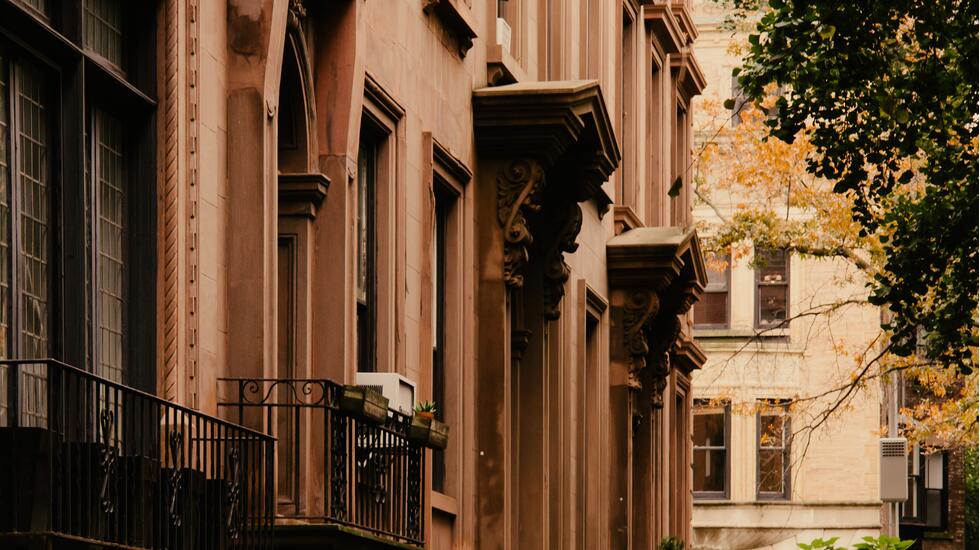Elegant, historic and iconic, Brooklyn’s brownstone houses have long enticed artists, writers and NYC’s elite over the Hudson. In an extract from his new book, Robert Rieger takes us on a photographic tour of the Brooklyn Heights neighbourhood
17 October, 2023

In
Brooklyn Heights, the hustle and bustle of New York City
seems a world away. Arriving on a balmy late summer day, it’s hard
not to be taken by the serene splendour of the neighbourhood. Just
across the East River from Lower Manhattan, it’s the first you encounter after
crossing the Brooklyn Bridge. The peaceful, tree-lined streets
provide a welcome break from the fast-paced lifestyle of the
city.
This district exudes old-world charm. It almost feels like a
snapshot of 19th-century New York City. Unsurprisingly, perhaps,
since – some smaller changes aside – the area still looks as it did
when it was built in the early 1800s.
A defining feature of the district is the abundance of
brownstone houses. These elegant, multistorey homes are made of a
type of warm, reddish-brown sandstone that was a dominant building
material in the 19th century. The buildings are three or four
storeys tall, with stairs (“stoops”) leading up to the front door
above street level.
I live in Brooklyn. By choice. Those ignorant of its allures are entitled to wonder why
For decades, Brooklyn Heights remained an enclave of the elite.
That changed with the construction of the Brooklyn Bridge in 1870.
The bridge started to draw working-class commuters to the borough
(much to the chagrin of older white and middle-class residents).
Mansions were divided into apartments and boarding houses, while
others were torn down.
With the Great Depression, the prosperous growth of the Heights
came to a halt. By the mid-20th century, the borough’s lustre had
faded. Brooklyn Heights was considered ripe for demolition, with an
ageing housing stock and many dilapidated tenements. Residents,
however, didn’t want to surrender so quickly. The Brooklyn Heights
Association, founded in 1910, successfully rallied against
high-rise luxury buildings and the Brooklyn-Queens Expressway,
which was supposed to cut through the neighbourhood.
Furthermore, the countless artists and writers living in the
area, such as Norman Mailer and Truman Capote, were eager to
protect the Heights’ singular appearance. Capote opened his 1959
essay “Brooklyn Heights: A Personal Memoir” with the words: “I live
in Brooklyn. By choice. Those ignorant of its allures are entitled
to wonder why.”
In the ensuing years, the proximity to Manhattan made the
Heights a fixture for a new vanguard of settlers, the
“brownstoners”. Often young, educated and working in media, finance
or the arts, these people – some called them yuppies – were
attracted by the quaint, cheap houses only one subway stop from
Wall Street.
Since then, property prices have only known one direction: up.
Today, the neighbourhood is revered as a “new West Village”. People
like Amy Schumer, Matt Damon, Michelle Williams, Adam Driver and
Björk live or have lived in the Heights. The New York Times called
it a “stodgy and moneyed enclave… the old Volvo of New York
neighbourhoods”. What draws people, the Times argues, are the
things it doesn’t have: “Until recently, there were no scene-y bars
or restaurants worthy of posting on Instagram. No gourmet stores to
buy grass-fed beef or cheese from Hudson Valley purveyors. No
boutique hotel with a lobby scene to take meetings.”
It has the brownstones, though.
This essay and photos are an extract from Façades of the
Brooklyn Heights (POOL), which is available from p-oo-l.com for £26.